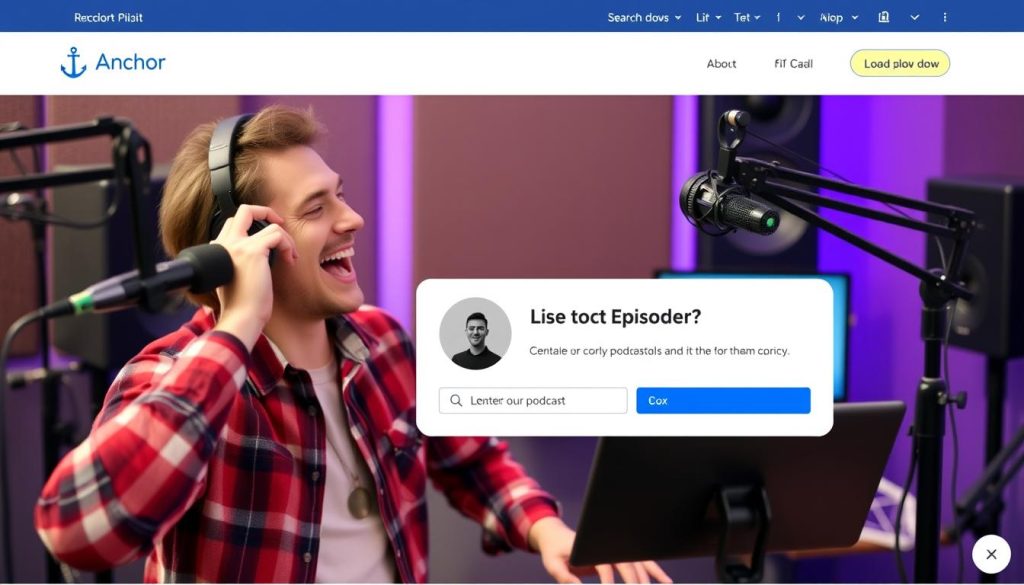As businesses strive to stand out in a crowded marketplace, content marketing has emerged as a vital strategy for building trust and driving growth. By providing valuable and relevant content, companies can attract and engage their target audience, fostering a loyal customer base.
We’re cutting through the noise to deliver a comprehensive resource that transforms how ambitious businesses approach their marketing efforts. With the global content marketing industry predicted to generate over $82 billion in 2024, it’s clear that this strategy is here to stay.
Our expert guide will reveal advanced strategies that separate market leaders from followers, helping you leverage your investment for maximum returns.
Key Takeaways
- Transform your marketing efforts with a comprehensive content marketing strategy
- Discover advanced techniques used by market leaders
- Maximize ROI with a data-driven approach
- Build trust and drive growth with valuable content
- Stay ahead of the competition with the latest industry insights
What Is Content Marketing and Why Does It Matter?
The power of content marketing lies in its ability to attract and retain a clearly defined audience, driving profitable customer actions. Unlike traditional advertising, which pushes a message to consumers, content marketing pulls them in by offering something they genuinely find useful.

Defining Content Marketing in 2024
In 2024, content marketing continues to evolve beyond simple blog posts, becoming a sophisticated business strategy that drives measurable value across the entire customer journey. It involves creating and distributing relevant content that addresses specific needs and problems of your target audience. Effective content marketing means creating purposeful content that solves specific problems while strategically advancing your business objectives.
- Creating purposeful content that addresses specific audience needs
- Strategically advancing business objectives through content
- Utilizing various content formats such as video, blog posts, and social media
The Business Value of Content Marketing
The business value of content marketing extends far beyond brand awareness—it builds trust at scale, shortens sales cycles, and creates compounding returns on your marketing investment. Unlike paid advertising that stops working when you stop paying, strategic content marketing builds a valuable asset that continues generating returns over time. It aligns with how modern customers make purchasing decisions: through research, education, and trust-building rather than through interruption.
By integrating content marketing into your overall marketing strategy, you can create a powerful mechanism for both top-of-funnel awareness and conversion. The most successful businesses recognize that content isn’t just marketing material—it’s a product in itself that provides real value to prospects before they ever become customers.
The Content Marketing Advantage for Ambitious Businesses
Ambitious businesses are leveraging content marketing to gain a distinct competitive edge. By adopting a strategic content marketing strategy, companies can outshine their competitors and achieve significant growth.
One of the primary advantages of content marketing is its ability to build trust and authority at scale. By creating high-quality content, businesses can establish themselves as thought leaders in their industry, fostering trust with their target audience.
Building Trust and Authority at Scale
The trust-building mechanism of content marketing works at scale, allowing businesses to establish authority with thousands of potential customers simultaneously without proportionally increasing costs. High-quality content acts as a 24/7 sales representative that never sleeps, consistently attracting and nurturing prospects even when your team isn’t actively working.
Forward-thinking companies leverage content marketing to filter for ideal customers by creating content that specifically addresses the needs and interests of their target audience. This targeted approach ensures that marketing efforts are more effective and yield better results over time.

Compounding Returns on Content Investment
The content marketing advantage compounds over time, producing higher returns on investment with each new piece of content. Unlike paid advertising, where ROI is roughly equal per dollar spent, businesses with established content marketing strategies generate significantly higher returns for each new piece of content.
This compounding effect creates a sustainable competitive advantage that grows over time, allowing businesses to outperform their competitors even during economic downturns. By investing in content marketing, companies can build a loyal audience and strengthen their brand.
Understanding the Content Marketing Funnel
The content marketing funnel is a strategic framework that guides potential customers through various stages, from initial awareness to making a purchase. This framework is crucial for businesses to understand, as it outlines the buyer journey and helps tailor content marketing strategies to effectively engage and convert prospects.
To develop an effective content marketing strategy, it’s essential to break down the funnel into its three primary components: Top of Funnel (ToFu)/Awareness, Middle of Funnel (MoFu)/Consideration, and Bottom of Funnel (BoFu)/Decision. Each stage represents a different part of the customer journey, requiring distinct content approaches to move prospects forward.

Top of Funnel: Awareness Stage
At the awareness stage, the focus is on creating content that addresses broad pain points and challenges, establishing your brand as a helpful resource. This stage is about raising awareness of the problems your brand or product can solve. Utilizing social media platforms can be an effective way to disseminate this content and reach a wider audience.
Middle of Funnel: Consideration Stage
In the consideration stage, content should strategically transition from being purely educational to solution-oriented. This involves presenting your products or services as potential solutions to the problems identified in the awareness stage. For example, you can use case studies or whitepapers to demonstrate how your offering can address specific challenges, helping prospects understand their options and positioning your brand within the competitive landscape for the buyer.
Bottom of Funnel: Decision Stage
The decision stage is where content plays a crucial role in removing final purchase barriers. Here, you need to provide proof points such as detailed comparisons, case studies, and specific implementation guidance to give prospects the final push they need to become customers. This is where you can highlight the unique value proposition of your product or service, making it clear why it’s the best choice.
By understanding how content functions at each stage of the funnel, businesses can create purposeful content that moves prospects forward, rather than simply entertaining them. This strategic approach to content marketing ensures seamless transitions between stages, maintaining engagement throughout the buyer journey and ultimately driving conversions.
Essential Types of Content Marketing
Content marketing encompasses a broad spectrum of formats, each serving a unique purpose in the customer journey. We’ve identified five essential content types that form the backbone of any comprehensive content marketing strategy.
Blog Posts and Long-Form Content
Blog posts and long-form content remain the foundation of content marketing, providing the depth needed to establish authority while serving as powerful SEO assets that drive organic traffic for years. To maximize their impact, consider using platforms like WordPress or Medium for hosting your blog content.

Video Content Marketing
Video content has become non-negotiable in modern content strategies, with its ability to explain complex concepts quickly and build stronger emotional connections with your audience. Tools like Adobe Premiere Pro and Final Cut Pro are industry standards for video editing.

Social Media Content Strategy
Social media content serves as both a distribution channel and a unique content format, requiring platform-specific approaches rather than simply repurposing content from other channels. Effective management of social media content can be achieved with tools like Hootsuite or Buffer.

Email Marketing Campaigns
Email marketing campaigns provide the rare advantage of direct audience access without algorithm interference, making them crucial for nurturing leads and maintaining customer relationships. Platforms such as Mailchimp and Constant Contact offer robust solutions for creating and managing email campaigns.

Podcasts and Audio Content
Podcasts and audio content offer unique advantages in audience retention and relationship building, allowing for passive consumption during activities when visual content isn’t practical. For hosting podcasts, consider platforms like Anchor or Buzzsprout.

By integrating these content types into a cohesive strategy, businesses can create a powerful content marketing framework that resonates with their audience and drives results.
Developing Your Content Marketing Strategy
Developing a content marketing strategy is not just a necessity, but a critical foundation for businesses aiming to thrive in today’s competitive landscape. A well-structured strategy is what differentiates successful content marketing efforts from expensive content creation that generates no return.
“A strategic approach to content marketing is essential for attracting the right prospects and nurturing them through the buyer journey,” emphasizes the importance of a thoughtful strategy. Without a clear plan, businesses risk publishing content randomly across different platforms, leading to disappointing ROI.
Identifying Your Target Audience
To develop an effective content marketing strategy, identifying your target audience is crucial. This involves understanding their specific challenges, information consumption habits, and decision-making processes. Ask yourself: What’s the title and position of the person who buys our product or service? What type of company does this person work at? What pain points does this person come to our brand to solve?
Setting Clear Content Marketing Goals
Setting clear, measurable content marketing goals ensures that your strategy serves business objectives rather than vanity metrics. Each piece of content should have a specific purpose in your customer acquisition or retention process. This goal-oriented approach helps in creating focused content that resonates with your target audience.

Content Planning and Calendar Creation
Content planning and calendar creation provide the operational framework that transforms strategy into consistent execution. This prevents the common pitfall of sporadic publishing and ensures that your content marketing efforts are sustained over time. A content calendar helps in organizing and scheduling content in advance, aligning it with business objectives and audience needs.
Resource Allocation and Team Structure
Resource allocation decisions determine your content marketing capabilities. Understanding the trade-offs between in-house teams, agencies, and freelancers based on your specific situation is crucial. Your strategy should explicitly identify which platforms and content types you’ll prioritize based on audience behavior and your competitive advantages.
By following these essential components, businesses can develop a robust content marketing strategy that drives results. As emphasized, “The most effective content marketing strategies include specific conversion paths that connect content consumption to business outcomes through strategic calls-to-action and lead nurturing processes.”
Creating High-Quality Content That Converts
Creating high-quality content that converts requires a deep understanding of your target audience. It’s about more than just producing content; it’s about crafting a message that resonates with your audience and drives meaningful actions.

To achieve this, you need to understand your audience’s pain points, develop a unique brand voice, and balance education with promotion. Let’s dive into these critical elements.
Understanding Your Audience’s Pain Points
Conversion-focused content marketing starts with deep audience research. It’s essential to understand not just what information your audience seeks, but why they seek it and what barriers prevent them from taking action.
- Identify the specific pain points your audience is facing.
- Understand the reasons behind their search for information.
- Recognize the barriers that prevent them from taking action.
Developing a Unique Brand Voice
In today’s content-saturated environment, developing a distinctive brand voice is non-negotiable. Your content must instantly communicate who you are and why your perspective matters.
To achieve this, focus on creating content marketing strategies that highlight your unique perspective and value proposition.
Balancing Education with Promotion
The most effective content balances educational value with strategic promotion. It’s about earning the right to present your solution by first delivering genuine insights.
By doing so, you create a content marketing approach that not only informs but also drives conversions. This approach ensures that your audience is engaged and motivated to take the next step.
The Ultimate Content Marketing Guide for Consistent Results
Content marketing success is not just about creating great content, but also about maintaining a consistent publishing cadence. To achieve consistent results in content marketing, businesses must strike a balance between quality and regularity.
Consistency is the hidden multiplier in content marketing—even exceptional content fails without a reliable publishing schedule that builds audience expectations and habits. We’ve developed a systematic approach to content production that transforms the chaotic, inspiration-dependent process most companies struggle with into a predictable, scalable operation.
Establishing Consistent Publishing Schedules
Establishing a consistent publishing schedule requires a realistic assessment of your team’s capacity. It’s better to publish quality content less frequently than to compromise standards to maintain volume. A well-planned content calendar helps in maintaining consistency and reducing inconsistencies.
For example, a company might decide to publish blog posts twice a week. This consistency helps build audience expectations and can improve engagement over time.
Content Workflow and Production Processes
Content workflow development is the critical foundation of successful content marketing, defining how ideas move from conception through creation, approval, and distribution. Implementing a content production system with defined roles, approval workflows, and quality checkpoints can prevent common bottlenecks that derail content calendars.
Content batching—creating multiple pieces in focused work sessions—dramatically increases productivity while maintaining quality and consistency across your content library. This approach allows teams to work more efficiently and effectively.
| Content Workflow Stage | Description | Responsible Team |
|---|---|---|
| Idea Generation | Brainstorming content ideas based on audience needs and trends. | Content Team |
| Content Creation | Writing, designing, and producing content. | Content Creators |
| Review and Approval | Reviewing content for quality, accuracy, and brand consistency. | Editorial Team |
| Publication | Publishing content across various channels. | Marketing Team |
Quality Control and Editorial Standards
The most effective content teams implement clear editorial standards that codify your brand voice, quality requirements, and factual accuracy processes. This ensures that all content meets the desired standards and resonates with the target audience.
By implementing these strategies, businesses can achieve consistent results
To maximize the effectiveness of your content marketing strategy, it’s crucial to invest in documentation and training that allows your content system to operate smoothly without depending on specific team members. Implementing the right project management tools for your content workflow pays enormous dividends in reduced administrative overhead and improved team collaboration.
Measuring Content Marketing Success
The key to unlocking the full potential of content marketing lies in accurately measuring its success. We need to adopt a comprehensive approach to evaluating the effectiveness of our marketing efforts.
Key Performance Indicators (KPIs) to Track
To measure content marketing success, we focus on a balanced scorecard of metrics across four categories: audience building, engagement quality, conversion effectiveness, and business outcomes. Some early content marketing metrics to track include higher quality leads, increased brand awareness, and improved website traffic.
We track specific campaigns to assess what content performed best and adjust our strategy accordingly. This involves monitoring metrics such as social media mentions, backlinks, and brand queries to gauge the impact of our marketing efforts on our brand.
Interpreting Data to Improve Strategy
Interpreting data effectively requires looking beyond surface-level metrics to understand the “why” behind performance patterns. We use qualitative feedback to provide crucial context for quantitative data, enabling us to refine our content marketing strategy and improve our overall marketing strategy.
By regularly evaluating our content library against performance benchmarks, we identify optimization opportunities and content gaps. This process helps us to adjust our strategy and create more effective content that resonates with our audience.
Advanced Content Marketing Techniques
Advanced content marketing techniques are revolutionizing the way businesses connect with their audience. These sophisticated strategies enable companies to maximize efficiency, deepen audience connections, and create personalized experiences at scale.
Efficient Content Creation
One key aspect of advanced content marketing is content repurposing. This involves taking a single piece of cornerstone content and transforming it into multiple derivative assets across different platforms. For instance, a long-form video content can be repurposed into social media clips, blog posts, and even podcasts, maximizing the value of the original content.
By adopting a systematic repurposing workflow, businesses can significantly reduce content creation costs and increase their online presence across various platforms, including social media and blogs.
Leveraging User-Generated Content
Another crucial technique is leveraging user-generated content. This not only reduces production requirements but also significantly increases authenticity and trust among potential customers. By encouraging and leveraging customer-created content, businesses can build stronger connections with their audience.
Interacting with potential customers through online communities, such as Slack groups and Facebook groups, can provide valuable insights into their pain points and help businesses create more relevant content.
Personalization and Audience Segmentation
Personalization has evolved beyond simple name insertion. Today, it’s about creating dynamic content experiences that adapt based on audience segments, behaviors, and stage in the customer journey. Techniques like progressive profiling can help build increasingly personalized experiences without overwhelming new visitors.
By leveraging data and research, businesses can gain a deeper understanding of their target audience and create content that resonates with them, ultimately driving better results from their content marketing efforts.
Overcoming Common Content Marketing Challenges
Effective content marketing requires more than just quality content; it demands strategic planning and execution. As businesses navigate the complex landscape of content marketing, they often encounter challenges that can hinder their progress.
Two of the most significant hurdles are maintaining consistency and quality, and proving ROI to stakeholders. To overcome these challenges, businesses must implement strategic solutions.
Maintaining Consistency and Quality
To maintain consistency and quality, we recommend implementing a tiered content production model. This approach balances high-investment cornerstone content with more efficient supporting content, ensuring a steady flow of quality content without sacrificing consistency.
Creating a content calendar is also crucial. It helps plan ahead for busy periods and ensures that content is published consistently, maintaining audience trust.
Proving ROI to Stakeholders
Proving ROI to stakeholders requires shifting from activity-based reporting to outcome-based measurement. This involves connecting content directly to business results that stakeholders care about, providing a clear picture of content marketing’s value.
| Challenge | Solution |
|---|---|
| Maintaining Consistency and Quality | Tiered Content Production Model, Content Calendar |
| Proving ROI to Stakeholders | Outcome-Based Measurement |
Conclusion: Taking Your Content Marketing to the Next Level
Effective content marketing is not just about creating content; it’s about building a sustainable competitive advantage. As we’ve explored throughout this guide, content marketing is an excellent strategy to make potential customers aware of your brand. By creating helpful content, you can build trust with your target audience and increase the likelihood of them purchasing your products or services when they’re ready.
The key to successful content marketing lies in understanding your audience’s needs, creating high-quality content that resonates with them, and leveraging the right platforms to reach them. It’s not just about producing content; it’s about developing a comprehensive strategy that aligns with your business goals and drives measurable results.
To take your content marketing to the next level, focus on:
- Developing a data-driven approach that balances decision making with authentic brand storytelling.
- Auditing your current content assets and identifying strategic gaps in your funnel.
- Creating a realistic implementation roadmap based on your specific resources.
- Building systems that can scale with your success, rather than relying on unsustainable effort levels.
By committing to the content marketing process and maintaining your strategy through initial periods of limited visibility, you’ll be able to compound your competitive advantage over time. Remember, the ultimate measure of content marketing success is creating a sustainable competitive advantage through thought leadership that competitors cannot replicate.
As you move forward with your content marketing efforts, we encourage you to start with excellence in one content format and master a single channel before expanding to additional platforms. By doing so, you’ll be able to create a seamless connection between content consumption and product experience, making your content an extension of your product rather than just promotion for it.
